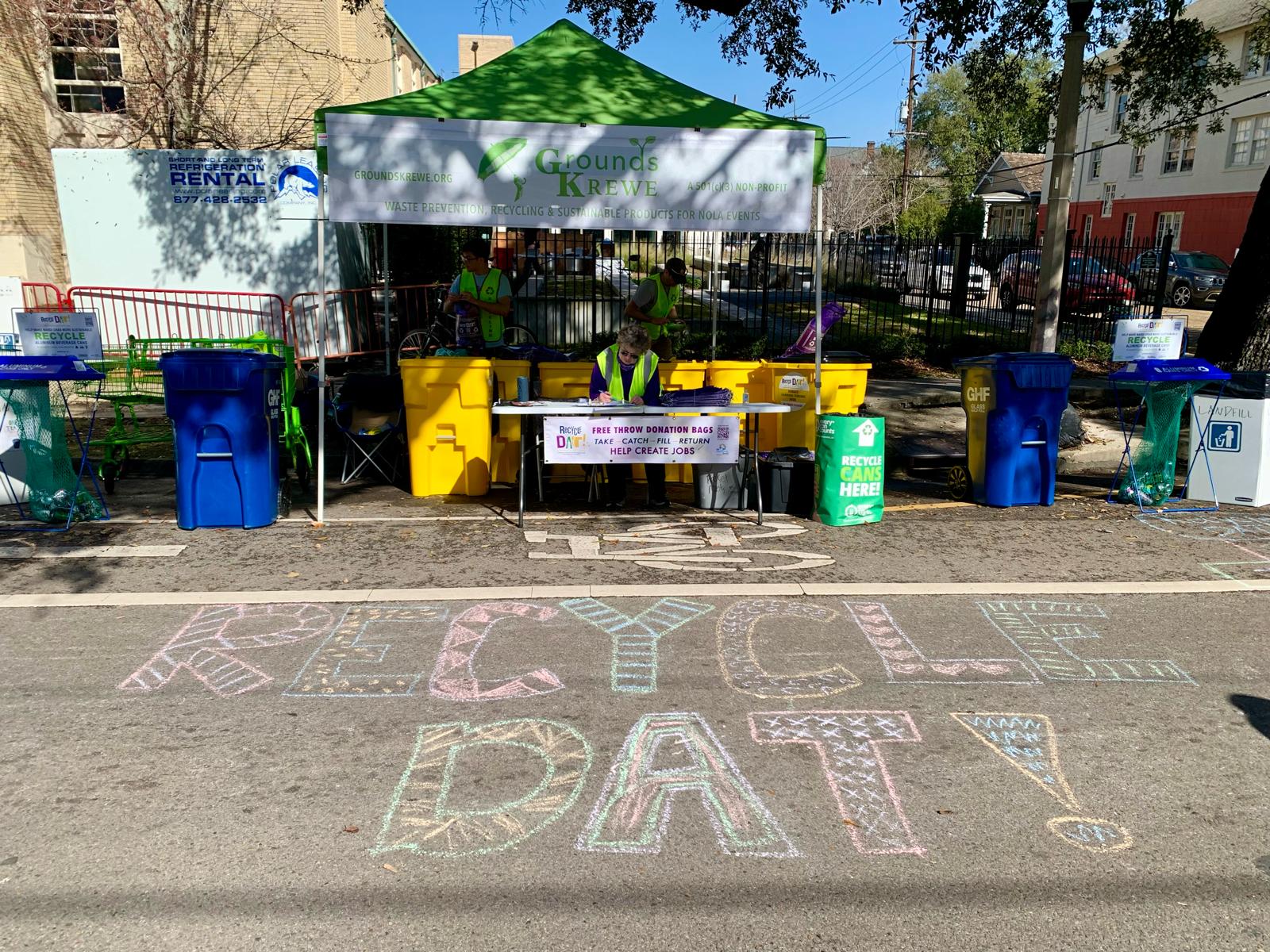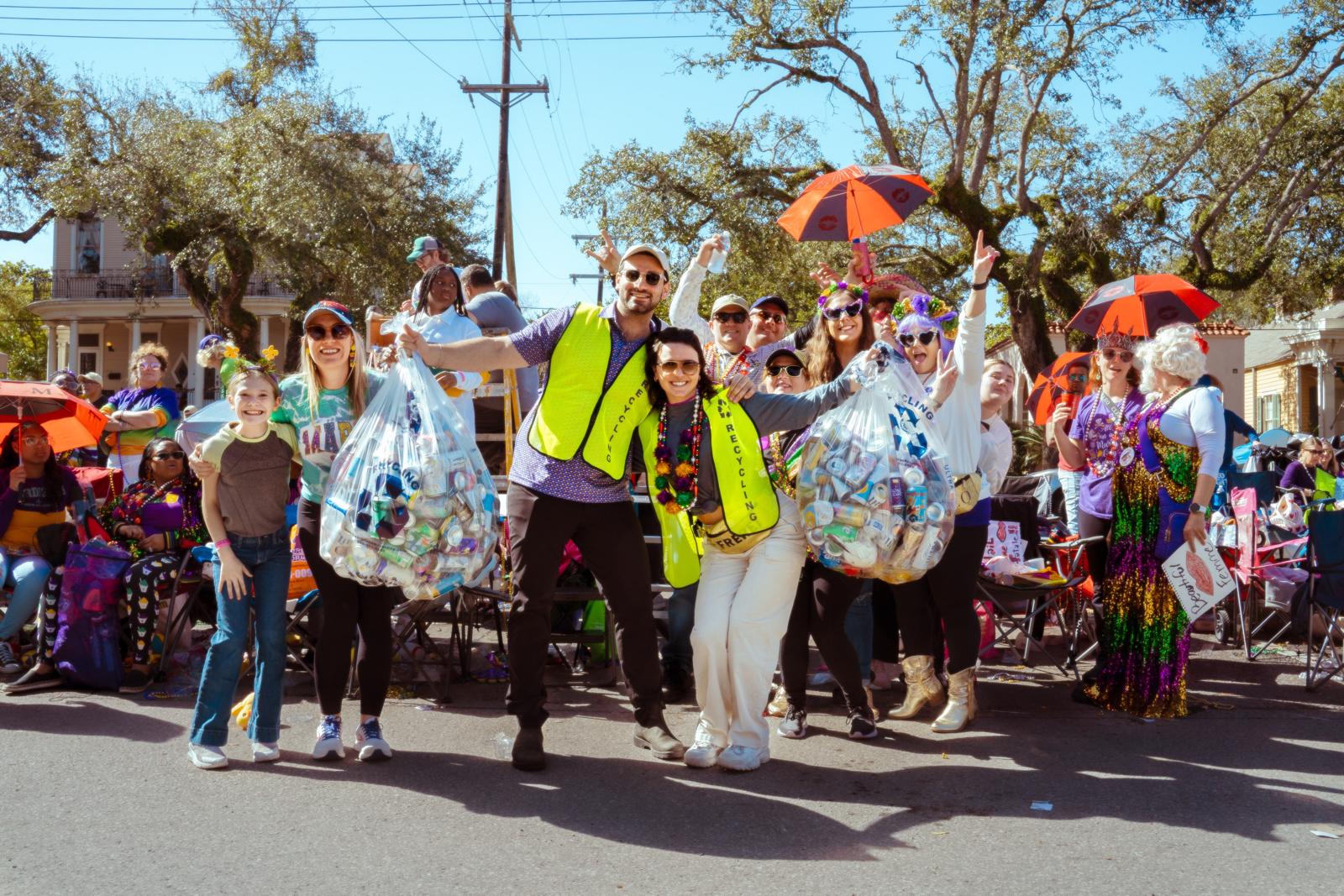New Orleans’ recycling initiative makes huge impact in its second year
Roughly one million people visit New Orleans for Mardi Gras annually. While this is an estimate to be proud of, there was once another number organizers used—and were proud of—to track the visitation of the event: amounts of waste produced.
“There was a time 20 years ago where the success of Mardi Gras was measured in how much trash was created,” says Walt Ledger III, CEO of New Orleans & Company. “The leaders would come on TV at the end of the day and say, ‘We collected 20,000 tons of garbage this year, what an amazing Mardi Gras it was.’ That was a long time ago and a different mindset, but I think now it’s really good to see our leaders talking about how much we were able to divert from landfills as a measure of success.”
Now in its second year, New Orleans’ recycling initiative, Recycle Dat, turned in numbers that can definitely be deemed a successful landfill diversion. The program is a partnership among 25 organizations, including New Orleans & Company, the city of New Orleans, Grounds Krewe and Can Manufacturers Institute.
Compared to last year, this year saw a significant increase in total waste diverted, 4,288 pounds of glass (compared to last year’s 1,500), 4,302 pounds of aluminum (last year: 1,475) and 12,697 pounds of Mardi Gras throws (last year: 11,535). This second run was the first time the program collected plastic bottles, recycling 236 pounds.
The ‘Why’ of Recycle Dat!

“While the work our sanitation workers was doing was phenomenal,” Ledger says, referring to the city’s sanitation workers, who were tasked with Mardi Gras cleanup before the creation of Recycle Dat. “We needed to be more thoughtful and intentional about how we tried to limit garbage making its way to landfills, how we recycle and how we engage appropriately to make sure this event can keep moving forward and be sustainable. Partnering with the city last year for [Recycle Dat] did some really remarkable things.”
Read More: Super Bowl LIX: As Las Vegas Cools Down, New Orleans Heats Up
Ledger says sometimes you’re so close to something that you don’t always pick up on ways it can be improved, “but I think this is a good example of the city and all of those krewes and organizations saying we’ve got to do better.” The “krewes” to which Ledger refers are the organizations that throw parades that move through the city streets. According to Ledger, there are 34 different krewes that each have a parade during Mardi Gras.
He added that one krewe announced that next year they’ll only be tossing out sustainable throws. “They’re no longer going to allow their members to throw certain things they find to be unsustainable or could be potentially harmful to the environment,” he says. “I think you’re going to continue to see more and more of the groups stepping up, self-regulating and making decisions that are more environmentally friendly.”
One other item Ledger says organizations have changed their tune on is moving from plastic Mardi Gras cups to stainless steel cups, as they’re long-lasting and can be used for longer periods of time. “I think you’re going to continue to see krewes making decisions that are a little different, that lead to a more positive outcome,” he says.
Volunteerism to a Paid Model
While last year was a volunteer program, this year Recycle Dat shifted toward a paid model for its participants. “I definitely think that it’s good to employ people to engage in this, volunteers can only get you so far,” Ledger says. “If you really want to be impactful, you’ve got to move to a professional setting and employ people. We’re all really happy that we took that step this year. I think it’s the right one and it puts the right focus and imperative behind it.”
Read More: New Orleans: A Color Palette of Life and Culture
While moving to a more professional model played a large part of the initiative’s increasing success, Ledger says he thinks another part of it can be credited to people simply being aware of the program and opening their eyes to the fact that less garbage is just better. “We can still have an amazing time and an amazing event, but there’s no reason that we can’t also be intentional about how we limit what we’re [sending] into landfills,” he says.
Visitor Participation
During the event, Mardi Gras organizers also encouraged visitors to recycle. “In some ways, visitors are more inclined to [recycle] than others, at least initially. That’s why we have to continue to educate. They may be coming from places that have a little bit more of a focus on it, so they’re focused on it.” As an example, Ledger recalled the 250 guests from the United Kingdom that come for Mardi Gras.
“Interestingly, they actually volunteered last year to participate when they were here as guests, because they saw that there was a need and a movement to do better,” he says. “They wanted to be a part of it. I was touched by that when they shared that with me, and they came back this year.”
Ledger says when those U.K. visitors came back this year, they commented on how the organization took things to a different level compared to 2023 and how great it was to see the community continue its commitment to getting its sustainability efforts right. “That leads me to believe we’re on the right track. It’s good to get that outside validation.”




